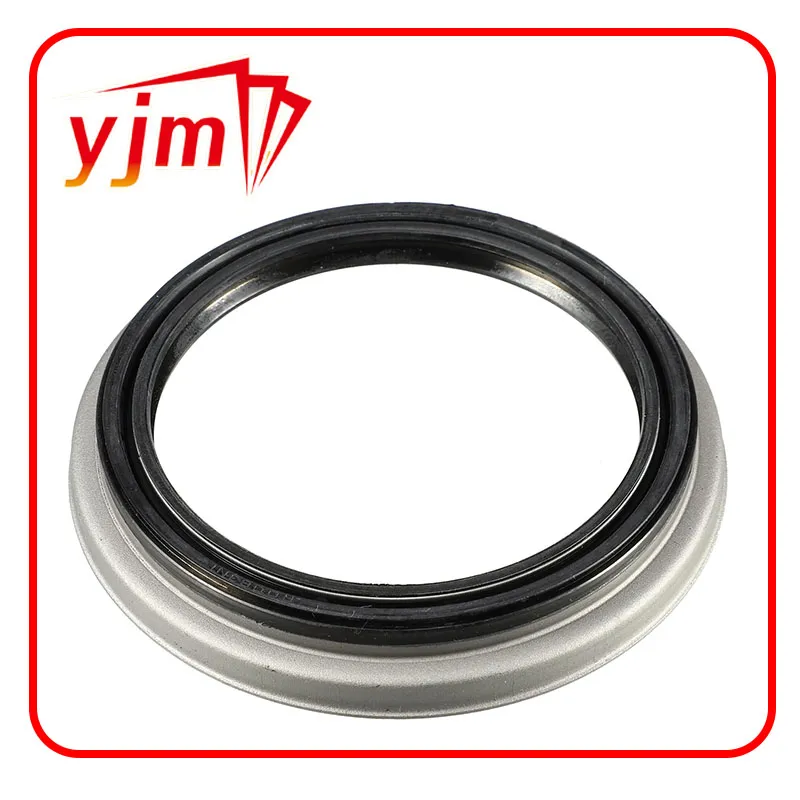40x52x7 oil seal
Understanding the 40x52x7 Oil Seal Specifications, Applications, and Importance
Oil seals, also known as shaft seals or rotary seals, are crucial components used in machinery and automotive applications. Among various types of oil seals, the 40x52x7 oil seal stands out due to its specific dimensions and applications. This article delves into its specifications, functions, and importance in various industries.
Specifications
The designation 40x52x7 indicates the oil seal's dimensions in millimeters. The first number, 40, refers to the inner diameter of the seal, while the second number, 52, indicates the outer diameter. The third number, 7, signifies the width or thickness of the seal. Understanding these dimensions is essential for selecting the right oil seal for any application.
In terms of material, oil seals can be made from various elastomers, such as Nitrile Rubber (NBR), Fluoroelastomer (FKM), or Silicone. The choice of material depends on the operating conditions, including temperature, pressure, and the type of fluid being sealed. NBR seals, for example, are commonly used due to their excellent resistance to oil and hydrocarbons, making them ideal for automotive and industrial applications.
Functionality
The primary function of the 40x52x7 oil seal is to prevent leakage of lubricants while keeping contaminants out of the machinery. This is critical for maintaining the operational integrity of rotating shafts. In applications such as automotive engines, hydraulic systems, and gearboxes, oil seals help protect against dirt, dust, and moisture, which can cause wear and tear on moving parts.
Furthermore, oil seals create a barrier that allows for lubrication, ensuring that the moving parts remain adequately greased for efficient operation. This not only enhances machinery performance but also prolongs its lifespan, reducing the frequency of repairs or replacements.
Applications
40x52x7 oil seal

The versatility of the 40x52x7 oil seal makes it suitable for various applications across different industries
1. Automotive Industry In vehicles, these seals are found in engines, transmissions, and differentials. They help maintain proper fluid levels and prevent leaks that could lead to significant damage or costly repairs.
2. Industrial Machinery Manufacturing equipment, pumps, and conveyors utilize oil seals to ensure operational efficiency by preventing contamination and maintaining lubrication.
3. Agricultural Equipment Tractors and other farm machinery rely on oil seals to protect critical components, ensuring they operate smoothly in demanding environments.
4. Aerospace and Marine Applications In these sectors, seals are designed to withstand extreme conditions. The 40x52x7 oil seal can be used in landing gears or hydraulic systems where reliability is paramount.
Importance of Proper Installation
Proper installation of an oil seal is critical to ensure its effectiveness. Incorrect installation can lead to improper sealing, causing leaks and potential equipment failure. It is essential to ensure that both the sealing surface of the shaft and the bore where the seal is installed are clean and free from damage. Moreover, using the correct installation tools and techniques can significantly enhance the performance and longevity of the seal.
Conclusion
The 40x52x7 oil seal is a vital component in numerous applications, providing essential sealing capabilities to protect machinery from leaks and contaminants. Choosing the right material and ensuring proper installation are crucial steps that affect the seal's performance. As industries continue to innovate and push for greater reliability and efficiency, the importance of effective oil seals, like the 40x52x7, cannot be overstated. Understanding these components not only aids in selection and application but also contributes to better maintenance practices, ultimately leading to enhanced machinery performance and longevity.
-
Simplifying Oil Changes: A Comprehensive Guide to Oil Drain Plugs and Their Variants
News Aug.04,2025
-
Mastering Oil Drain Maintenance: Solutions for Stripped, Worn, and Upgraded Oil Plugs
News Aug.04,2025
-
Fixing Oil Pan Plug Issues: Leaks, Stripped Nuts, and the Right Replacement Solutions
News Aug.04,2025
-
Everything You Need to Know About Oil Drain Plugs: Sizes, Fixes, and Upgrades
News Aug.04,2025
-
Choosing the Right Oil Drain Plug: A Guide to Sizes, Materials, and Drain Innovations
News Aug.04,2025
-
A Complete Guide to Automotive Drain Plugs: Types, Problems, and Innovative Solutions
News Aug.04,2025
-
The Ultimate Guide to Car Repair Kits: Tools and Essentials Every Driver Should Own
News Aug.01,2025
Products categories















